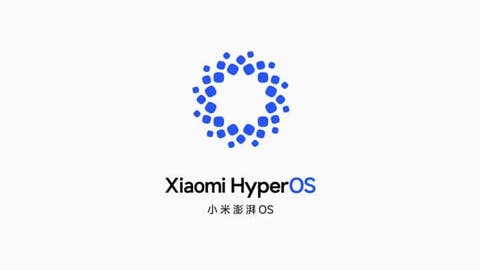As with each major Android release, phone manufacturers are gearing up to integrate the latest features into their custom user interfaces (UIs). Xiaomi is no exception, currently testing the Android 15 beta. With plans to upgrade its devices with the upcoming system update. This coincides with the introduction of HyperOS 2.0. It’s the next iteration of Xiaomi’s unified software experience designed to replace MIUI on smartphones.
Xiaomi Unveils First Devices Receiving HyperOS 2.0 and Android 15 Update
HyperOS 2.0: A New Chapter in Xiaomi’s Software Experience
The introduction of HyperOS marked a significant shift in Xiaomi’s software strategy. Aimed at creating a cohesive ecosystem across its devices, HyperOS replaced MIUI on smartphones with Android 14. Now, with Android 15 on the horizon, Xiaomi is preparing to launch HyperOS 2.0 alongside the new system update.
While details regarding the specific features of HyperOS 2.0 remain undisclosed, it’s likely to build upon the foundation laid in the first version. Users can expect further refinements and integrations designed to enhance the overall user experience.
Early Access: Xiaomi 14 Series and Pad 6S Pro Join Android 15 Beta
Xiaomi has included three of its latest devices. the Xiaomi 14, Xiaomi 13T Pro, and Xiaomi Pad 6S Pro 12.4 – in the Android 15 beta program. This allows users with these models to experience the upcoming system update in its early stages. Once Xiaomi finalizes the stable version of Android 15 and HyperOS 2.0, these devices will be the first in line to receive the official update.
Transparency in Updates: Xiaomi Security Center Guides Users
Xiaomi prioritizes transparency regarding software updates for its devices. The company maintains a comprehensive record through its Xiaomi Security Center webpage. This portal details the update schedule for various models and also identifies devices that have reached the end of their update lifecycle.
Furthermore, the Security Center features an “AER” (Android Enterprise Recommended) section. This program identifies devices suitable for business environments, offering extended security guarantees and update support. A recent update to the Xiaomi Security Center revealed the first 23 smartphones and tablets slated to receive the Android 15 and HyperOS 2.0 update.
Confirmed Devices Receiving Android 15 and HyperOS 2.0
The following Xiaomi and POCO devices are confirmed to receive the Android 15 and HyperOS 2.0 update:
- Xiaomi: Xiaomi 14 Ultra, Xiaomi 14, Xiaomi 13T Pro, Xiaomi 13T, Xiaomi 13 Lite, Xiaomi 12 Pro, Xiaomi 12, Xiaomi 12T Pro, Xiaomi 12T
- Redmi: Redmi Note 13 Pro+ 5G, Redmi Note 13 Pro 5G, Redmi Note 13 Pro, Redmi Note 13 5G, Redmi Note 13, Redmi 13C, Redmi Note 12, Redmi 12 5G, Redmi 12
- POCO: POCO F6 Pro, POCO F6, POCO X6 Pro, POCO X6, POCO M6 Pro 5G
Expected Update Timeline
Based on historical trends, the update rollout is likely to commence sometime between September and October. Following a typical release pattern, newer and premium devices will receive the update first. With older models following suit in the subsequent months.
This update signifies Xiaomi’s commitment to providing its users with access to the latest Android features and its own innovative software enhancements through HyperOS 2.0.
Potential Benefits of HyperOS 2.0 and Android 15 for Xiaomi Users
With the confirmed rollout of Android 15 and HyperOS 2.0 on the horizon, let’s explore some of the potential benefits Xiaomi users can expect:
Enhanced User Experience: Android 15 is expected to introduce various improvements to the core Android experience. These could include optimizations for battery life, performance enhancements, and potentially new privacy features. HyperOS 2.0, building upon the foundation of the first version, may further refine these improvements and integrate them seamlessly with Xiaomi’s own software features.
Improved Security: Both Android 15 and HyperOS 2.0 are likely to incorporate the latest security patches and protocols to safeguard user data and privacy. This is particularly important for users who rely on their smartphones for sensitive tasks like mobile banking or online transactions.
Feature Integration and Innovation: Xiaomi has a history of introducing innovative features within its custom UI. HyperOS 2.0 might leverage the capabilities of Android 15 to offer even more integrated and user-friendly features. This could encompass areas like multitasking, notification management, or customization options.
Ecosystem Continuity: HyperOS, designed as a unified software experience, aims to provide a seamless transition between smartphones, tablets, and potentially other Xiaomi devices. With the update to HyperOS 2.0, users can expect further improvements in this area. Potentially enabling smoother data transfer, app continuity, and device interaction.
Considerations and Potential Concerns
While the upgrade promises exciting new features, there are a few points to consider:
Learning Curve: A new software version often necessitates a period of adjustment for users accustomed to the previous interface. While Xiaomi strives for a smooth transition, some users might require time to adapt to potential changes in layout, functionality, or gesture controls within HyperOS 2.0.
App Compatibility: With a major system update, there’s a slight chance that some older apps might experience compatibility issues. While most developers typically update their apps to support the latest Android versions, users might encounter temporary compatibility issues with a small number of apps until they receive updates from their respective developers.
Update Rollout Timeline: The staggered update rollout, prioritizing newer devices first, might cause a temporary disparity among users. Those with older but still supported devices might have to wait a few additional months to receive the update.
Conclusion
The upcoming update to Android 15 and HyperOS 2.0 signifies Xiaomi’s commitment to keeping its devices updated with the latest software. While there might be a slight learning curve and potential app compatibility concerns during the initial phase, the update is expected to deliver a range of benefits for users, including enhanced user experience, improved security, innovative features, and a more cohesive ecosystem experience. With Xiaomi’s focus on transparency through the Security Center, users can stay informed about the update schedule and plan accordingly.
